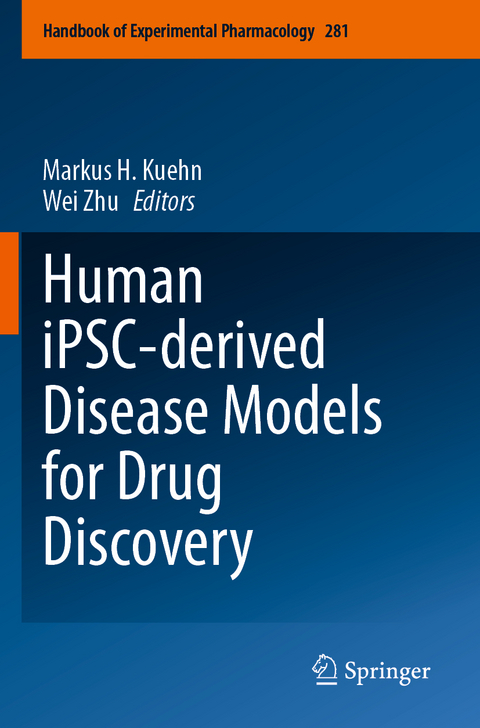
Human iPSC-derived Disease Models for Drug Discovery
Springer International Publishing (Verlag)
978-3-031-42351-2 (ISBN)
Part 1 General considerations.- Human iPS for clinical applications and cellular products.- 3D-printed iPS disease models.- Part 2 CNS iPSC and organoids.- iPS-derived neurons and brain organoids from patients (brain).- iPS-derived RGCs (eye).- iPS-derived glia (brain).- iPSC to model blood-brain barrier endothelial cells.- Part 3 iPSC-derived nociceptive neurons.- IPSC-based peripheral nerve modeling.- Part 4 Non-neuronal specialized cell types.- iPSC-based drug screening of differentiated cardiomyocyte subtypes.- iPSC-based cardiac disease modeling: from cell to tissue.- iPSC-derived corneal endothelial cell.- iPSC-derived trabecular meshwork (eye).- iPSC for in vitro disease modeling of diabetes.
| Erscheinungsdatum | 26.11.2024 |
|---|---|
| Reihe/Serie | Handbook of Experimental Pharmacology |
| Zusatzinfo | VIII, 332 p. 100 illus., 30 illus. in color. |
| Verlagsort | Cham |
| Sprache | englisch |
| Maße | 155 x 235 mm |
| Themenwelt | Medizin / Pharmazie ► Studium |
| Naturwissenschaften ► Biologie ► Humanbiologie | |
| Schlagworte | Cardiovascular Diseases • Disease Modeling • drug discovery • IPSC • Nervous System Diseases • ophtalmology diseases • Organoids • Three-dimensional printing |
| ISBN-10 | 3-031-42351-8 / 3031423518 |
| ISBN-13 | 978-3-031-42351-2 / 9783031423512 |
| Zustand | Neuware |
| Informationen gemäß Produktsicherheitsverordnung (GPSR) | |
| Haben Sie eine Frage zum Produkt? |
aus dem Bereich


